Conference Presentations by funda baş bütüner
IFLA World Congress , 2019
Papers by funda baş bütüner
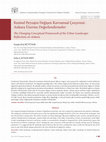
Journal of Ankara Studies, 2021
Cumhuriyet Döneminde Ankara'da tasarlanan bütüncül peyzaj dokusu, bugün yerini parçacıl bir yakla... more Cumhuriyet Döneminde Ankara'da tasarlanan bütüncül peyzaj dokusu, bugün yerini parçacıl bir yaklaşımla üretilen birbirinin tekrarı yeşil alanlara bırakmıştır. Bu değişimin getirdiği yıkıcı süreç kentin özgün peyzaj dokusunu tahrip etmiş; var olan peyzaj değerlerini görünmez kılmıştır. Bu noktada makale, Ankara'nın aşınan ve yok olan peyzaj dokusunu farklı ölçek, bağlam ve mekân tipleriyle sergileyen iki çizgisel peyzaj üzerinden tartışmaktadır: Atatürk Bulvarı ve Hatip Çayı vadisi. Morfolojik yapıları ve oluşma biçimleri birbirlerinden farklı olan bu iki peyzaj dizgesi üzerine yapılacak okuma, Ankara peyzaj tarihinin özgün mekânlarını ve yitirilen çeşitliliğini bütüncül bir çerçevede yeniden düşünmemize imkân verecektir. Bu okuma aynı zamanda, günümüzde varlığını sürdüren arda kalmış potansiyel alanlara ve peyzaj üretme biçimlerine dair de farkındalık yaratacaktır. Böylece, son 20-30 yıldır birçok dünya kentinin gündemine aldığı iklim değişikliği ve dirençli kentler gibi konuların gerektirdiği peyzaj odaklı şehirciliğin Ankara bağlamında tartışılması mümkün olabilecektir.

Landscape Research, 2020
The rise of railways as urbanistic and landscape opportunities has generated new tracks in theory... more The rise of railways as urbanistic and landscape opportunities has generated new tracks in theory and practise. Apart from being decisive in the formation and development of the urban fabric, railways have also manipulated rural and urban landscape. With their surrounding land and integrated (sub)(infra)structure, they manifest infrastructural terrain wheretheinterruptedrelationamongstcity,landscapeandhumancanbe rediscovered. Hence, this article intends to decode the infrastructural terrain along the Sincan-Kayaş commuter line in Ankara (Turkey) and reflectonthe fragmentationofthelandscape fabricinorder toappreciate the currently existing landscape fragments: linearscapes, heritage lands and desolate lands. By means of these three types, the commuter line, currently forming an urban obstacle, might be revealed as a reference for integrative infrastructural terrain introducing a new urban landscape agenda for Ankara.
ECLAS 2019: Lessons from the past, visions for the future, 2019
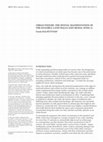
METU Journal of the Faculty of Architecture, 2019
This article intends to question changing spatiality and position of the “urban edge” in expandin... more This article intends to question changing spatiality and position of the “urban edge” in expanding cities, and argues its spatial manifestation as an “urban fissure”. The term “edge”, which basically refers to the end line between two opposing milieus, became redundant in the expanded urban surface; and necessitates a critical review through a new concept. Edge, demarcating the communication/interaction line between two milieus, acts also as a “productive frontier” and generates an edgescape that subsequently appears as urban fissure in the expanded city. The Istanbul Land Walls, with their immense size and multi-layered spatiality, present a unique case in the search for urban fissure. The triple defense architecture of the Land Walls forms a complex system, composed of open and enclosed spaces: inner wall, outer wall, moat, terraces between the walls, towers and gates. Besides their architecture, the Land Walls have also triggered the generation of edge spaces on and around them: gates, Byzantine Imperial Palaces, Yedikule Fortress, bostans, cemeteries, sacred spaces, industrial sites, circulation infrastructure, recreational areas and neighborhoods. The coexistence of these spaces has formed a mural zone that has been molded by spatial removals, impositions or superimpositions throughout the course of the history. In this respect, the mural zone might be identified as a challenging ground, having diverse representations in different times: the material expression of the territorial defense for centuries, derelict defense architecture in Ottoman Istanbul, a ruined edgescape in the 19th century; an urban wilderness in the 1950s, and an urban interstice by 1980s. Especially after the 1980s, an increased number of (inter)national efforts/regulations/ planning attempts, informal occupancies and spatial removals/injections, have highly influenced the spatiality of the mural zone that ended up with spatial fragmentation, over-programming, and razed characteristic landscape fabric. To this purpose, this article discusses the multi-scaled and multi-layered spatiality and landscape of the mural zone through an integrated historical and conceptual reading that will present the mural zone as an urban fissure. Such analysis will reveal currently endangered spaces and landscape memories in the mural zone, and will liberate mural zone from over-programmed urban and landscape scenarios.
EYMİR: Araştırmalar, Proje ve Planlama Calışmaları, 2018
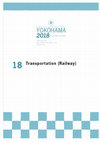
THE 18th IPHS CONFERENCE Looking at the World History of Planning PROCEEDINGS, 2018
Evolution of commuter rail transit systems has always served a tight relationship with the develo... more Evolution of commuter rail transit systems has always served a tight relationship with the development of urban planning theory and practice. Commuter rail development in Ankara has a peculiar history begun with the pronunciation of Ankara as the capital city of the new regime in 1923, as opposed to its numerous contemporaries which had emerged as the lasting effects of Industrial Revolution on cities. In the earlier plans representing the culturalist school of spatial organization, Ankara commuter line was recognized as a planning tool in the designation of the rural-urban continuum, urban green network, community spaces and logistic centers. The commuter line together with adjoined uses, today, might be a remarkable case in the broad identification of the railway heritage assets as well as the complementary relationship between urban morphology and history. Besides being a mass transport service covering approximately 37 km distance, the line provides planning opportunities in consolidating the fragmented historic properties (historic villages, landed estates, industrial areas etc.) of the Republican period plans and discovering the spatial interactions generated by the railway lines. In this respect, the aim of this study is to reveal the significance of Ankara Commuter Line as a city planning legacy by mapping its earlier development and accompanied built and landscape heritages.
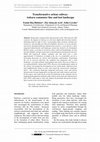
24th ISUF International Conference VALENCIA, 2017
Being major transportation infrastructure of the 19th and early 20th centuries, the impacts of ra... more Being major transportation infrastructure of the 19th and early 20th centuries, the impacts of railways on cities have highly directed urban studies; deforming material edge of cities, encouraging urban extension, forming new territories, and speeding up urban development. However, in recent decades, with newly emerging landscape infrastructure practice, a new idea for a more integrated infrastructure and landscape system has started to be formulated. Railway strips, occurring as territories where solid-void morphology of cities becomes illegible, emerge as generators in the formation of urban green network. Within this framework, Ankara commuter line that mark outs a route approximately 37 kilometers in length in the city, is a remarkable case for a motivating discussion on railway and landscape confrontation. Penetrating the city in east-west direction, the commuter line integrated with a rural landscape -covering orchards, truck gardens and creeks-that was serving as a the railway encouraged the development of new urban lands, industrial areas and neighborhoods along its route, and erased the characteristic landscape fabric. The continuous landscape integrated with green, water and railway infrastructure became fragmented covering only some splits of green and water. In this respect, this study dwells on the lost landscape of the commuter line by mapping the fragmented continuity of the railway, green and water infrastructure three systems in the current urban fabric.
BEYOND ALL LIMITS 2018: International Congress on Sustainability in Architecture, Planning, and Design, 2018
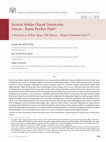
Journal of Ankara Studies, 2017
Kent içi ulaşım hatları, ağırlıklı olarak, mühendislik alanı ve ulaşım planlaması dâhilinde ele a... more Kent içi ulaşım hatları, ağırlıklı olarak, mühendislik alanı ve ulaşım planlaması dâhilinde ele alınmış; kendilerini tarif eden ve kimi zaman sınırlandıran kent peyzajı ile kurdukları ilişkiler üzerinden kavramsallaştırılmamışlardır. 1990'lı yıllarda gündeme gelen " altyapısal şehircilik " ve " peyzaj şehirciliği " yaklaşımlarının, ulaşım altyapılarını teknik bir zorunluluk olmaktan ziyade kentsel olanak olarak değerlendirmesi, ulaşım hatlarının gizil kalmış mekânsallığını görünür kılmıştır. Bu çerçevede, Ankara'nın yoğun kent dokusu içinde 37 kilometrelik bir güzergâh belirleyen Sincan-Kayaş banliyö hattı, üstünde düşünülmesi gereken kritik bir alan olarak ortaya çıkar. Kent merkeziyle Kayaş arasında banliyö seferlerinin başladığı dönemde, kırsal peyzajın parçası olan hat, zamanla içinden geçtiği peyzajı dönüştürmüş; yeni arazilerin, sanayi alanlarının ve mahallelerin gelişiminde etkili olmuştur. Demiryolunu takip eden arazilerin yaşadığı bu dönüşüm, Sincan-Kayaş banliyö hattının bir çizgi olarak kentle kurduğu ilişkiyi de değiştirmiştir. Bugün hat, içinden geçtiği çevrelerden bağımsızmış gibi görünen bir iz oluşturmakta ve yer yer etrafında, tariflenmesi güç, artık alanların gelişimine neden olmaktadır. Mevcut hali ile sorun olarak değerlendirilebilecek bu durum, diğer bir bakışla banliyö hattının gizil mekânsallığının izleri olarak ele alınabilir. Böyle bakıldığında, hattın barındırdığı mekânsallığın tespiti, Ankara'nın kentsel dokusu ve peyzajıyla bütünleşmiş bir banliyö hattının kurgulanmasında yönlendirici bir aşama olarak değerlendirilmelidir. Demiryolunun içinden geçtiği çevrelerle bir aradalığından ortaya çıkan farklı ölçeklerdeki arayüz mekânlar ve aynı zamanda birlikte ilerlediği yeşil alanlar ve akarsular ile kurduğu unutulmuş veya dikkate alınmamış ilişkiler, Sincan-Kayaş banliyö hattı özelinde ortaya çıkan ve üzerinde tartışılması gereken özgün konulardır.
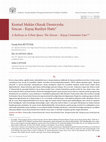
Öz Kent içi ulaşım hatları, ağırlıklı olarak, mühendislik alanı ve ulaşım planlaması dâhilinde el... more Öz Kent içi ulaşım hatları, ağırlıklı olarak, mühendislik alanı ve ulaşım planlaması dâhilinde ele alınmış; kendilerini tarif eden ve kimi zaman sınırlandıran kent peyzajı ile kurdukları ilişkiler üzerinden kavramsallaştırılmamışlardır. 1990'lı yıllarda gündeme gelen " altyapısal şehircilik " ve " peyzaj şehirciliği " yaklaşımlarının, ulaşım altyapılarını teknik bir zorunluluk olmaktan ziyade kentsel olanak olarak değerlendirmesi, ulaşım hatlarının gizil kalmış mekânsallığını görünür kılmıştır. Bu çerçevede, Ankara'nın yoğun kent dokusu içinde 37 kilometrelik bir güzergâh belirleyen Sincan-Kayaş banliyö hattı, üstünde düşünülmesi gereken kritik bir alan olarak ortaya çıkar. Kent merkeziyle Kayaş arasında banliyö seferlerinin başladığı dönemde, kırsal peyzajın parçası olan hat, zamanla içinden geçtiği peyzajı dönüştürmüş; yeni arazilerin, sanayi alanlarının ve mahallelerin gelişiminde etkili olmuştur. Demiryolunu takip eden arazilerin yaşadığı bu dönüşüm, Sincan-Kayaş banliyö hattının bir çizgi olarak kentle kurduğu ilişkiyi de değiştirmiştir. Bugün hat, içinden geçtiği çevrelerden bağımsızmış gibi görünen bir iz oluşturmakta ve yer yer etrafında, tariflenmesi güç, artık alanların gelişimine neden olmaktadır. Mevcut hali ile sorun olarak değerlendirilebilecek bu durum, diğer bir bakışla banliyö hattının gizil mekânsallığının izleri olarak ele alınabilir. Böyle bakıldığında, hattın barındırdığı mekânsallığın tespiti, Ankara'nın kentsel dokusu ve peyzajıyla bütünleşmiş bir banliyö hattının kurgulanmasında yönlendirici bir aşama olarak değerlendirilmelidir. Demiryolunun içinden geçtiği çevrelerle bir aradalığından ortaya çıkan farklı ölçeklerdeki arayüz mekânlar ve aynı zamanda birlikte ilerlediği yeşil alanlar ve akarsular ile kurduğu unutulmuş veya dikkate alınmamış ilişkiler, Sincan-Kayaş banliyö hattı özelinde ortaya çıkan ve üzerinde tartışılması gereken özgün konulardır. A Railway as Urban Space: The Sincan – Kayaş Commuter Line** * Bu makale " Demiryolunun Peyzaj ve Kentsel Tasarım Unsuru Olarak Mekânsal Potansiyellerinin Tespiti: Sincan-Kayaş Banliyö Hattı " (BAP-08-11-2015-035) başlıklı ODTÜ Bilimsel Araştırma Projesi kapsamında yapılan çalışmalar esas alınarak geliştirilmiştir. Aksi belirtilmediği sürece maka-lede yer alan fotoğraf ve haritalar ilgili proje arşivine aittir. Proje Yürütücüsü: Dr. Funda Baş Bütüner, Proje Ekibi: Doç. Dr. Ela Alanyalı Aral, M.Sc. Selin Çavdar, Yardımcılar: M.Arch. Neris Parlak. (çizimler ve haritalama), Evren Özeşen. (fotoğraflar). ** " This article is based on work undertaken as part of the METU scientific research project " Identifying the Spatial Potential of the Railway as an Element of Landscaping and Urban Design: The Sincan–Kayaş Commuter Line " (BAP-08-11-2015-035). Unless otherwise stated, the maps and photographs in this article belong to the project archive.
IASTE Traditional Dwellings and Settlements Working Paper Series, 2015
This study explores centuries-long spatial patterns along the old city walls of Istanbul-Land Wal... more This study explores centuries-long spatial patterns along the old city walls of Istanbul-Land Walls. Being the edge of / in the city since the 5 th century, Land Walls and their near surrounding have been occupied by particular spaces and types. Unlike the complicated urban history and enormous urban implementations, some of these spaces and patterns have transmitted for centuries in the urban fabric of Istanbul. In spite of recent plans, projects and regulations that intend to domesticate the mural landscape, the sacred places, cemeteries, bostans and flow spaces still characterize the inherited landscape along the Land Walls.
The Monument Upside Down, 2010
Public Istanbul: Spaces and Spheres of the Urban, 2008
42nd ISoCaRP Congress, 2006
IASTE Traditional Dwellings and Settlements Working Paper Series Volume 155, 2002
Volume 155 Pages 3749 2002 J 38 . IASTE Working paper Series . Volume 15S SPATIAI, SOCIAL AND TEM... more Volume 155 Pages 3749 2002 J 38 . IASTE Working paper Series . Volume 15S SPATIAI, SOCIAL AND TEMPORAI COMPROMISE ON THE 'BORDER'
Books by funda baş bütüner
Bezirhane'de Birikenler: Tasarımcıların Gözünden Kapadokya, 2020










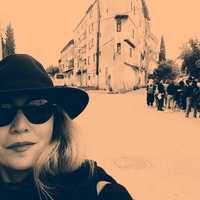
Uploads
Conference Presentations by funda baş bütüner
Papers by funda baş bütüner
Books by funda baş bütüner